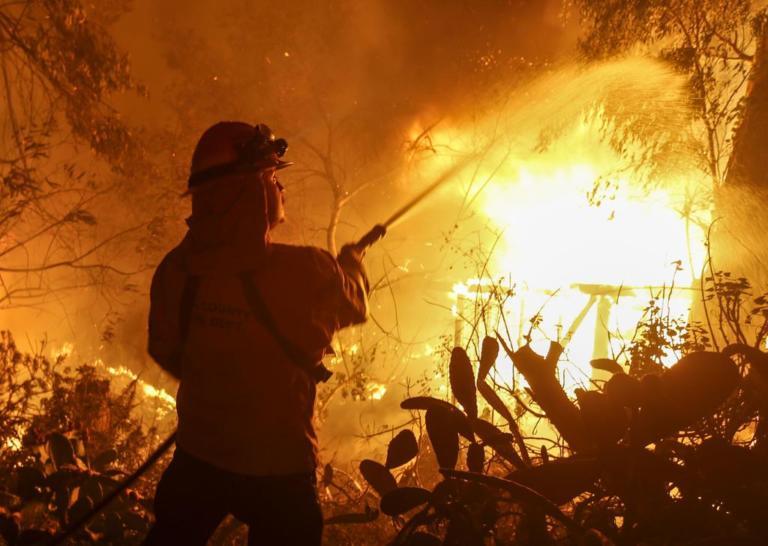California wildfire toll rises
November 13, 2018 | Expert Insights

The death toll from a devastating California wildfire has matched that of the deadliest to hit the state, with 29 people killed, a local sheriff said on Sunday (Nov 11).
Background
A wildfire or wildland fire is a fire in an area of combustible vegetation that occurs in rural areas. Wildfires can be characterized in terms of the cause of ignition, their physical properties, the combustible material present, and the effect of weather on the fire. Wildfires can cause damage to property and human life, but they have many beneficial effects on native vegetation, animals, and ecosystems that have evolved with fire.
Strategies for wildfire prevention, detection, and suppression have varied over the years. One common and inexpensive technique is controlled burning: permitting or even igniting smaller fires to minimize the amount of flammable material available for a potential wildfire.
In California, the U.S. Forest Service spends about $200 million per year to suppress 98 per cent of wildfires and up to $1 billion to suppress the other 2 per cent of fires that escape initial attack and become large.
Analysis
The death toll from a devastating California wildfire has matched that of the deadliest to hit the state, with 29 people killed, a local sheriff said on Sunday (Nov 11).
More than 100 people are unaccounted for in a charred swath of land larger than Detroit that has been razed by the Camp Fire in the Sierra Nevada foothills.
Although the fire had been 25 per cent contained by Sunday, high temperatures and gusty winds made the weather optimal for the Northern California fire to spread for at least another day.
As of Saturday, the Camp Fire had destroyed nearly 7,000 structures in and around the mountain town of Paradise and has been blamed for most of the last week's fire deaths. Two people were also killed as a result of separate fires in Southern California.
However, the bulk of firefighter resources were focused on the Camp Fire. The 1933 Griffith Park wildfire in Los Angeles County killed 29.
Sheriff Honea, who is also the county coroner, told that he had to add a fifth search-and-recovery team to help find bodies. Authorities have not released the names of victims and have continued to search for more.
His office has also ordered an additional DNA lab truck and received help from anthropologists at California State University at Chico for a time-consuming and daunting task: In some cases, investigators have found only pieces of bone.
The smoke, like orange fog, that enveloped Chico and surrounding towns on Friday gave way to a low-lying haze that spread all the way up to Redding over the weekend, thanks to a shift in winds. As the fire moved on, displaced residents were allowed to return to whatever was left of their homes, in some cases finding only ash and charred foundations.
Governor Jerry Brown, a Democrat, requested a presidential major disaster declaration, which would make the hardest-hit communities eligible for housing, unemployment and other support programmes and allow state and local governments to repair or replace fire-damaged facilities and infrastructure. FEMA has already granted a state request for emergency aid.
President Donald Trump has alternated between offering sympathy for displaced people and firefighters and lashing out at California's leaders over what he deemed poor forest management.
As the argument intensified, state firefighters found their resources divided between a historic fire in the north and a pair of fires in the south.
Near Los Angeles, about 200,000 people were displaced by the expanding Woolsey Fire, which began mid-afternoon on Thursday near Simi Valley, even as fire departments were responding to a second wildfire, the Hill Fire, just west of Thousand Oaks.
Assessment
Our assessment is that the wildfire is not the first to wreak havoc in northern California this year. California is expected to see an increase in the number of wildfires due to global warming over the next two decades. We believe that the US federal government as well the Californian Government must implement more cost-effective and environmentally sustainable methods of fighting wildfires.








Comments